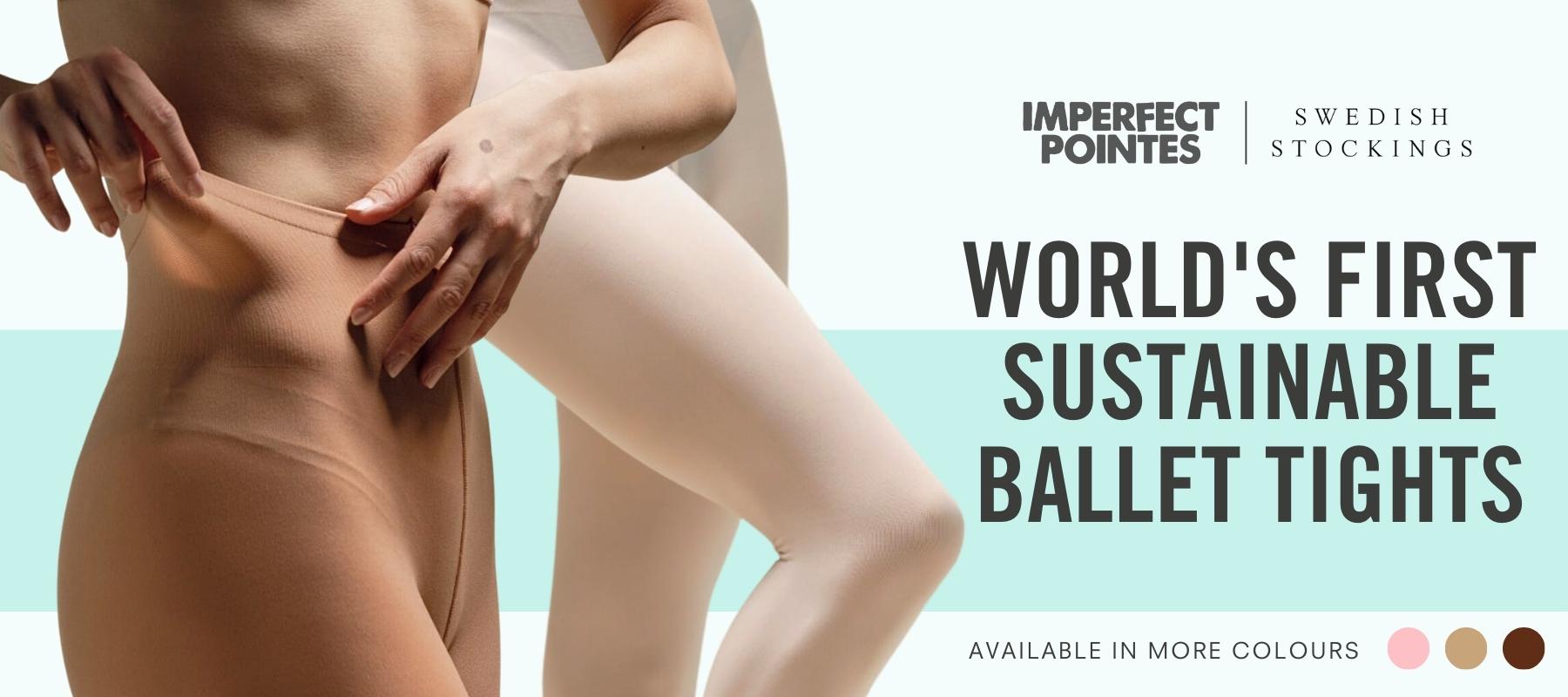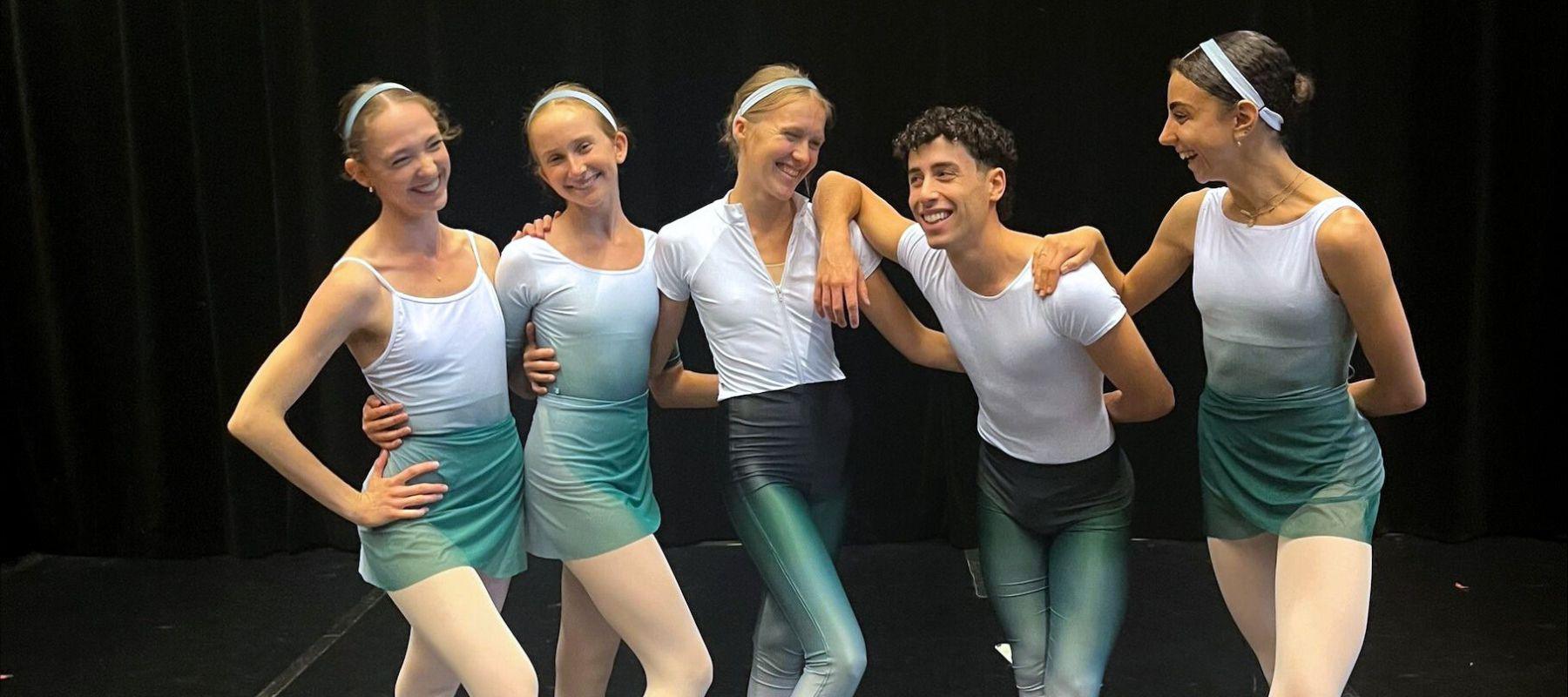
The Imperfect way to deal with rejection
Biscuit Ballerina, our collaborator on Imperfect Pointes, knows a thing or two about dealing with rejection in the dance world. Since, its that time of year when results are dropping into our customers' inboxes, I thought I'd get some top tips on dealing with rejection from Shelby Williams AKA Biscuit Ballerina and Romy Adair, founder of the Hard Corps Podcast for those dancers who didn't get the result they wanted. Please share these coping mechanisms with any dancers who need them.
What is your go to strategy when you get that ‘NO, you're not what we are looking for' email?
Shelby:
I first allow myself to feel disappointed. Getting a “no” can be painful, and I think it’s important to acknowledge that feeling, otherwise it can feel like I just pushed it aside and never digested it.
Then I find that it really helps to try and look at the situation as objectively as possible. I remind myself of the limited number of contracts/roles to cast and that those positions are usually being filled with a very clear idea of what type of dancer it needs to be. So much of getting an opportunity in dance is tied to being in the right place at the right time.
I try to reflect on my experience and see where to go from there. Did I feel like it was a natural fit, but maybe just the wrong time? I’ll keep working and try again! Did I feel like there were other dancers who were better suited for the position than me but I still think I could be a good fit if I work on some things? I’ll use what I learned from my audition experience to guide the direction of what I work towards improving. Did I feel very out of place at the audition in a way that wasn’t fun or an exciting challenge? Maybe it’s just not the right place for me and my time and energy is better spent exploring other things.

Romy:
Over time this answer has changed. When I first graduated I was very hung up on what auditions I got in comparison to others. I didn’t have any clear goals of places I wanted to work with, except that I wanted a job. I definitely came into the industry naive of the standard that I would be competing against, and how much having connections and networks can help. As I’ve grown, I’ve had my fair share of rejection emails and something that helps me to stay grounded is to remember it only takes one YES.
Now, I don’t take it personally, I know the industry is competitive, there are thousands of others competing, and sometimes you just aren’t the right fit for that moment, but it doesn’t mean it won’t happen.
One thing that you do that makes you feel better?
Shelby:
To feel better, I try to focus on other opportunities as well as investing energy into things outside of the dance bubble. Turning my focus towards other goals such as preparing a video for a different company or choreographing a passion project with friends helps give me something to be hopeful or excited about again.
I love feeling like I’m growing or learning, so putting myself in a situation that promotes growth, such as preparing for a future audition or a personal creative project, gives me a sense that I am putting some of the control of my progress as a dancer back into my own hands. I find that sort of autonomy very comforting in such a subjective profession where decisions about my professional opportunities are almost always beyond of my control.
Spending time with friends and family who are not related to dance in any way also helps me to see the big picture. Whilst I might be disappointed in one corner of my life, I live a very full life that has so much else to offer and multiple sources of happiness to turn to.
Romy:
Personally, it helps to verbalise my frustrations, especially if I don’t get invited to a company I really wanted to go to, or didn’t get the contract at the end of the Audition. It’s frustrating, but talking about it with my friends and staying confident in my worth and my values help me stay grounded.

One thing that helps you not dwell on it for too long?
Shelby:
Using rejection as a form of feedback (especially if actual constructive feedback comes with that rejection) can be a great way to better understand what needs to be worked on, but there should be a healthy limit to how much one focuses on that rejection. Dwelling on negative feedback is never constructive nor good for the mental health!
To help myself not dwell on a negative response, I like to try and identify the silver linings that come with a “no.” Not being cast in something could mean that I have more free time during the work day to get in a studio by myself and work on something that I don’t usually have the time or energy for. It could also be an opportunity for a little extra downtime after a period of feeling overworked.

Romy:
It’s ok to sit and think about it, sometimes I just scroll on TikTok, sometimes I go for a run. I’m pretty good at moving onto the next thing, because I have a clear end goal in mind. But that’s not always easy, and sometimes I have a little cry. Also just allowing yourself to continue enjoying life even if you don’t feel deserving, just because you ‘aren’t there yet’.
How do you choose to make and set goals?
Shelby:
I set goals using the same sort of approach I would use for applying to university. In applying to university, I learned to create categories: reach schools (dreams schools that are perhaps a bit beyond my credentials), target schools (schools whose standards are on par with my academic history), and safety schools (schools whose entry requirements are below what I have already achieved). Of course creating a scale for the dance world is not as objective as grade point averages are in the academic world, but the general structure of this approach can be applied.
When I was looking for my first job as a dancer for example, I categorized the companies that were looking for dancers into reach companies, target companies, and safety companies, projects, or further training programmes. I looked at the biographies of the dancers in each company to see if their dancers were similar to me in age or experience. If the dancers were all older or came from schools that were more difficult to get into than my ballet school, I would add the company to the “reach” list. If the dancers had similar backgrounds to my own and stylistically their repertoire seemed to suit my strengths, I added the company to my “target” list. If a company was made up of dancers that had less professional experience than me or if there was a post-graduate training program that I knew through friends was fairly easy to get into, I would add that to my “safety” list. Categorising the places I would be applying to helped me to keep a good balance of the types of places I was applying to. Applying only to my dream companies never seemed like a good idea. I knew I wanted to dance and my love for dance wasn’t limited to only dancing in my dream companies, so applying to a range of companies was a way to increase my chances of getting my foot in the door as a professional.
Romy:
I’ve set goals differently through out my life, but I’ve always had them and through time become more confident to verbalise them, which helps me stay consistent in making things happen. I believe achieving your goals is a mixture of consistency, luck & being in the right place at the right time. But being consistent and putting yourself out there are the only things within your control.
What’s your favourite look for feeling confident and comfortable in the studio?
Shelby:
First of all, I always feel most confident when my dancewear fits well and is made of high quality materials. I don’t want to be distracted by a leotard that is squeezing me in the wrong place or by tights that are starting to sag. I want everything to support my body comfortably, stay in place when I’m dancing, and not fall apart on me after a few wears.
Currently, my favorite look is the Marseille leotard in oyster with grey trim. I adore how flattering the neckline is. A correction I often get is to pay attention to my shoulders (they love to ride up!) and the Marseille leotard gives my shoulders and chest a relaxed look.
I usually pair my leotard with a pair of convertible tights from Imperfect Pointes (they’re the only tights I own that don’t get runs in them despite being convertible!) and a scarf that I tie around my waist like a skirt. Sometimes, I go without the scarf, but most of the time, I like that it keeps my lower back warm.

Romy:
Fit is everything for me. Our bodies change a lot and what we like changes too. In an audition I want to feel SPICY, CONFIDENT & FEMININE, I’ve really enjoyed exploring my studio style since leaving ballet school. I play around with colour combos, skirts, headbands, what hairstyles suit me etc. I like showing off my neckline and back, so like to choose leotards that show this off, my current rotation is Imperfect Pointes Racing Blue Barcelona with the pink Sustainable tights ON TOP, and a little SAB style skirt. The style is perfect as it allows me to feel everything I want to feel in an audition.

One thing that helps you be more accepting of things not going to plan?
Shelby:
Knowing that flexible plans or failed plans can still help you to get to where you want to be has helped to make disappointments much easier to accept.
As someone who grew up believing in “the American Dream,” I always thought I could achieve anything I wanted to as long as I worked hard enough. I loved making plans to help me get there. With time, I still believe this to be true. The only difference in my understanding of it now is that I know that the dream can be broader, can evolve over time and things don’t always have to go according to plan to end up where I ultimately want to be.
When I was younger, my dream was to be a professional dancer with American Ballet Theatre. At some point, I realised that I really just wanted to dance and be happy doing so, and American Ballet Theatre was neither the right fit nor the only option. It has been exciting to be forced to look at other options when what I had hoped and planned for didn’t work out. It helped me to discover new companies, strengths and passions within dance
It's important to not let plans or goals get too rigid. When they are able to remain fluid and are combined with working both intelligently and passionately, things seem to fall into place in the best possible way.
Romy:
A lot of what happens in this industry is not up to us, as dancers. It may seem that we don’t have a lot of control over how our careers unfold. If my goals don’t go to plan, I try to come at it from a different angle, step back and think about how I’ve approached and reacted to situation, and just keep moving forward.
One tip that helps your mindset in preparation for auditions/ castings?
Shelby:
Before entering an audition, I try to remember to be authentic in my presentation of myself. People shine brightest when they aren’t busy trying to look like someone else. I remind myself that if a choreographer or company picks me for dancing the way that feels most natural to me, the work will more likely be an organic fit that I can enjoy and thrive in.
Just as much as I am auditioning for a company or contract, the director or choreographer is auditioning for me. It has to be a good fit on both sides and being confident in being myself both in personality, and movement quality increases the chances of finding a truly great match.
Romy:
This is something that has also changed a lot, I’m a lot more confident in my strengths and myself, in comparison to my grad year. Auditions have been the best when I’ve enjoyed it, and just danced. Try to focus on yourself, and dance for the audience, if you get wrapped up in what everyone else is doing, you’ll never be happy with how you did.
Just remember rejection is redirection






Laisser un commentaire
Ce site est protégé par hCaptcha, et la Politique de confidentialité et les Conditions de service de hCaptcha s’appliquent.